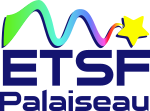| Author | |
|---|---|
| Keywords | |
| Abstract |
Photoemission spectra reflect the many-body electronic structure of materials. The main peaks whose energies vary as a function of angle-resolved momentum usually correspond to the band structure. Replicas of these peaks, called satellites, are entirely due to interactions. Therefore, they could be used to detect the strength of electronic correlation in a material, if intrinsic features were not buried by other scattering effects. This study demonstrates how intrinsic satellites can be unraveled from measured spectra by using angular resolution and insights on the origin of nondispersing satellite contributions. Consequently, angle-resolved photoemission can be used to set an unambiguous lower bound on the strength of correlation.Interaction effects can change materials properties in intriguing ways, and they have, in general, a huge impact on electronic spectra. In particular, satellites in photoemission spectra are pure many-body effects, and their study is of increasing interest in both experiment and theory. However, the intrinsic spectral function is only a part of a measured spectrum, and it is notoriously difficult to extract this information, even for simple metals. Our joint experimental and theoretical study of the prototypical simple metal aluminum demonstrates how intrinsic satellite spectra can be extracted from measured data using angular resolution in photoemission. A nondispersing satellite is detected and explained by electron\textendashelectron interactions and the thermal motion of the atoms. Additional nondispersing intensity comes from the inelastic scattering of the outgoing photoelectron. The ideal intrinsic spectral function, instead, has satellites that disperse both in energy and in shape. Theory and the information extracted from experiment describe these features with very good agreement.All study data are included in the article and SI Appendix. |
| Year of Publication |
2020
|
| Journal |
Proceedings of the National Academy of Sciences
|
| Volume |
117
|
| Number of Pages |
28596
|
| ISSN Number |
0027-8424
|
| URL |
https://www.pnas.org/content/early/2020/10/27/2012625117
|
| DOI |
10.1073/pnas.2012625117
|
| Download citation |
Unraveling intrinsic correlation effects with angle-resolved photoemission spectroscopy
Developed & Designed by Alaa Haddad. Customized by ETSF Palaiseau © 2025.
